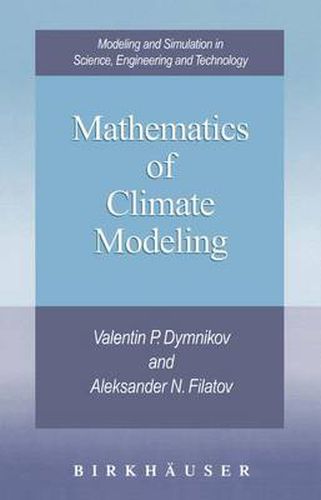Readings Newsletter
Become a Readings Member to make your shopping experience even easier.
Sign in or sign up for free!
You’re not far away from qualifying for FREE standard shipping within Australia
You’ve qualified for FREE standard shipping within Australia
The cart is loading…






This title is printed to order. This book may have been self-published. If so, we cannot guarantee the quality of the content. In the main most books will have gone through the editing process however some may not. We therefore suggest that you be aware of this before ordering this book. If in doubt check either the author or publisher’s details as we are unable to accept any returns unless they are faulty. Please contact us if you have any questions.
The present monograph is dedicated to a new branch of the theory of climate, which is titled by the authors, Mathematical Theory of Climate.
The foundation of this branch is the investigation of climate models by the methods of the qUalitative theory of differential equa tions. In the Russian edition the book was named Fundamentals of the Mathematical Theory of Climate.
Respecting the recommenda tions of Wayne Yuhasz (we are truly grateful to him for this advice), we named the English edition of the book Mathematics of Climate Modelling.
This title appears to be more appropriate, since the con structive results of the theory are at present preliminary and have not been fully tested with experiments in climate modelling. This branch of science is yet developing and its practical results will be obtained only in the near future. Nevertheless, we want to keep the terminology which we have used in the introduction to the Russian edition of the book, since the authors hope that this term will be accepted by the scientific community for identification of a given branch of climate theory. On preparing the English edition, new ideas were established con necting some significant new research results obtained by the author. We are deeply grateful to G. Marchuk for continual encourage ment of this scientific enterprise and fruitful discussions, to our young colleagues A. Gorelov, E. Kazantsev, A. Gritsun, and A.
$9.00 standard shipping within Australia
FREE standard shipping within Australia for orders over $100.00
Express & International shipping calculated at checkout
This title is printed to order. This book may have been self-published. If so, we cannot guarantee the quality of the content. In the main most books will have gone through the editing process however some may not. We therefore suggest that you be aware of this before ordering this book. If in doubt check either the author or publisher’s details as we are unable to accept any returns unless they are faulty. Please contact us if you have any questions.
The present monograph is dedicated to a new branch of the theory of climate, which is titled by the authors, Mathematical Theory of Climate.
The foundation of this branch is the investigation of climate models by the methods of the qUalitative theory of differential equa tions. In the Russian edition the book was named Fundamentals of the Mathematical Theory of Climate.
Respecting the recommenda tions of Wayne Yuhasz (we are truly grateful to him for this advice), we named the English edition of the book Mathematics of Climate Modelling.
This title appears to be more appropriate, since the con structive results of the theory are at present preliminary and have not been fully tested with experiments in climate modelling. This branch of science is yet developing and its practical results will be obtained only in the near future. Nevertheless, we want to keep the terminology which we have used in the introduction to the Russian edition of the book, since the authors hope that this term will be accepted by the scientific community for identification of a given branch of climate theory. On preparing the English edition, new ideas were established con necting some significant new research results obtained by the author. We are deeply grateful to G. Marchuk for continual encourage ment of this scientific enterprise and fruitful discussions, to our young colleagues A. Gorelov, E. Kazantsev, A. Gritsun, and A.